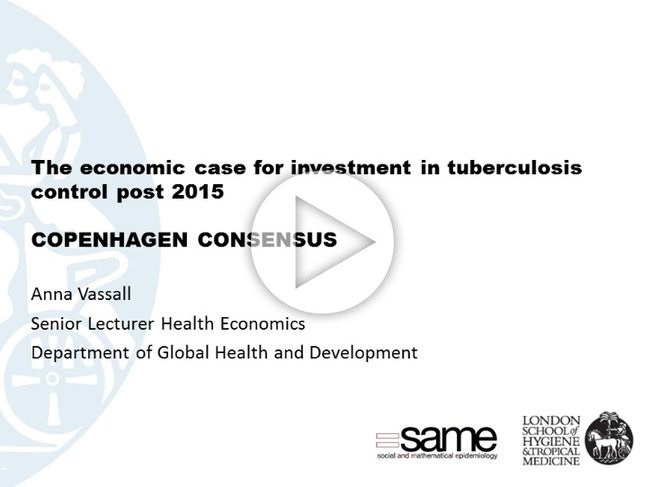Bangladesh Perspectives: Tuberculosis
Seminar Speakers
- Dr. Shayla Islam of BRAC
- Anna Vassall is Senior Lecturer in Health Economics at the London School of Hygiene and Tropical Medicine.
Seminar Presentation by Anna Vassall
Background
Every year, around 80,000 Bangladeshis die from tuberculosis (TB) and about 190,000 new cases occur. Every hour, nine people die from the disease, despite effective treatments being available. But diagnosis is not always easy, and treatment takes several months; in the meantime, loss of earnings for the sufferer may drive families into poverty, multiplying the burden of the disease.
The current situation can be dramatically improved. The target proposed is a 95% reduction in TB deaths and a 90% reduction in new cases in 20 years’ time. In Bangladesh, that could be achieved for about $300 million a year. This sounds a lot, but it would give each TB patient on average about another 25 years of life. Also, treating one patient should prevent at least one more case developing.
Just $15 would buy an extra year of life for most TB sufferers. Valuing each year at $1,000 means that every dollar spent on TB control pays back thirtyfold.
Most cases are drug-sensitive and respond well to standard treatment with a combination of drugs, but failure to complete a proper course of treatment encourages the development of multi-drug resistant TB (MDR-TB), which is difficult and costly to treat and has poorer outcomes.
Because diagnosing active TB is quite complex, almost half of the cases in Bangladesh go unrecognized. The country relies on sufficiently skilled medical staff to diagnose patients who present with symptoms, but the strong community infrastructure is also mobilized via the network of community health workers and organizations such as the Bangladeshi Rural Advancement Committees (BRACs).
TB is more common among poorer people, with proportion having the disease being about five times higher for the poorest quarter of the population than for the richest quarter. However, more than half of detected cases were from the richest quarter, with only 2% found in the poorest quarter. Prosperous people with TB are over 100 times as likely to be diagnosed as the poorest in society, but poorer people carry a much greater burden of disease.
Most cases of TB – drug-sensitive ones – need a two-month intensive phase of drug treatment followed by a four-month continuation phase. The full course needs to be completed to achieve a cure, but this can be done in the community. If this is done the chances of a cure are high; the success rate in Bangladesh is 92%. The outlook for MDR-TB is much worse: a two-year course of treatment, some of it in hospital, and a 68% chance of a cure. Tackling TB better will reduce the number of complex, hard-to-treat cases developing.
The costs of TB to a family are in the region of $150-250, the equivalent of an entire year’s income for the poorest quarter of society. Treating TB effectively needs investment in diagnostics, drugs and community health services, plus social protection for patients to encourage their continuing treatment.
TB is a big problem for Bangladesh but one which can be tackled effectively. This would be a very good investment and would mainly benefit the poorest members of society.


